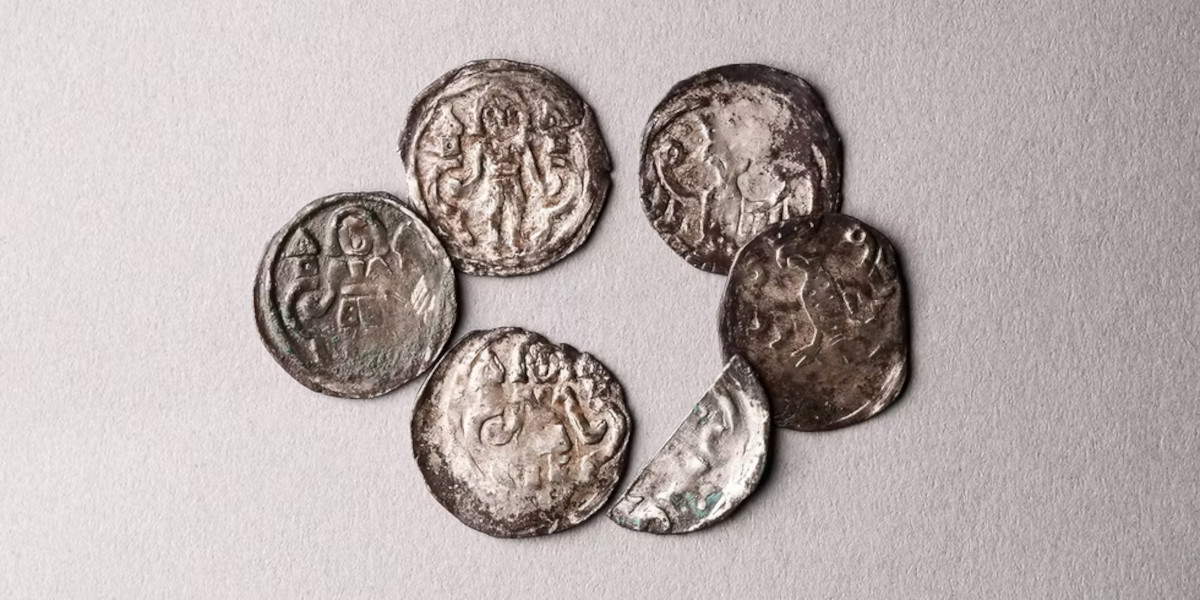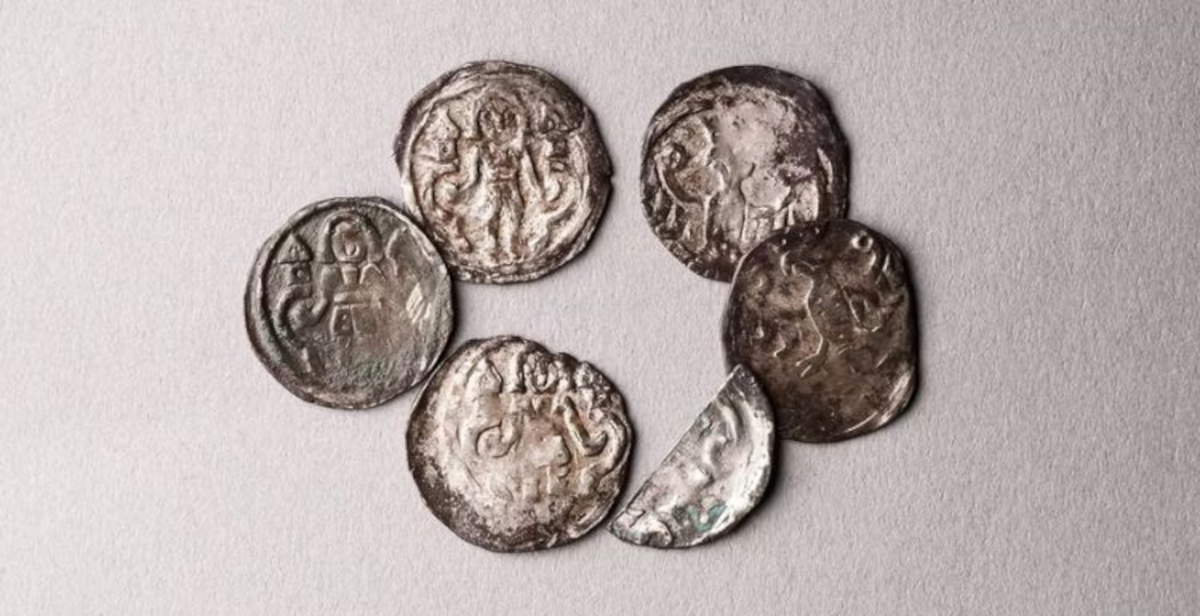In Berlin’s Mitte district, a small medieval treasure has emerged from underground during archaeological investigations at Molkenmarkt, the city’s oldest square. The excavations, conducted by Landesdenkmalamt Berlin, uncovered five whole denarii and one half money, dating to the second half of the 13th century. The coins, made of silver and about 1.5 centimeters in diameter, come from the period of rule of the Ascan margraves Otto IV and Otto V, in office between 1260/65 and 1293.
“The excavation at Molkenmarkt,” explains Christian Gaebler, senator for urban development, building and housing, "with an area of about 22,000 square meters is currently the largest excavation in the city center in Germany and always surprises with interesting finds. In the recently opened Berlin PETRI, visitors can now admire a variety of finds from Molkenmarkt. The scientific processing of the finds will still hold many interesting discoveries for us about medieval Berlin and will change the view of the history of our city."
The coinage features, on the obverse, the standing figure of a margrave between two domed towers each resting on a double arch, while the reverse depicts a crowned eagle. The find was made inside a medieval pit, in a setting that allowed archaeologists to preserve the finds in their entirety. The small hoard is part of a much larger collection: the Molkenmarkt, one of the German capital’s most important excavation sites, has already returned some 700,000 artifacts that tell the story of the daily life of Berlin’s population over several centuries. These include a net weight from the 14th century, a bone flute from the same period, footwear and a leather stocking dated around 1450, a coeval silk ribbon, marbles and toys from the 17th century, and flints from 18th-century flintlock weapons. Part of this heritage will be displayed along with the coins.

“The coins found,” says Christoph Rauhut, state conservator and director of the Berlin State Monuments Office, “are an important testimony to the consolidation of medieval Berlin in the 13th century. They can be detected for the first time at the Molkenmarkt for Berlin.”
The operations at Molkenmarkt, located in the area of Berlin’s oldest square, involve an average thickness of four meters of soil and involve the excavation of more than 88,000 cubic meters of historic strata. The site’s uniqueness is due to the complete sealing of the surfaces that took place in the mid-twentieth century, which enabled exceptional preservation of the structures and archaeological finds. The excavations document stratification from the medieval founding of the city to the 20th century. Evidence includes traces of the underground city between the 18th and 20th centuries, and a section of wooden plank walkway 50 meters long and up to seven meters wide, dated around 1230, and several fortified moats from the 13th century. Numerous wells and latrines, dating between the 13th and 18th centuries, have returned a rich array of everyday objects. Remains of medieval wooden cellars and dwellings, domed clay ovens and remains of blacksmith stores have also emerged.
There is no shortage of evidence from even earlier periods. Indeed, some areas have revealed traces of prehistoric habitation, particularly from the Stone Age, helping to extend the chronological span of the area’s documented history. According to the Landesdenkmalamt, more than 70 percent of the planned volume has already been excavated and documented. Currently, activities are focused on completing the excavation campaign and recording all evidence in detail. Once the field phase is finished, an extensive scientific analysis of the finds and contexts will follow, with the goal of reconstructing the urban and social history of the Molkenmarkt as comprehensively as possible.
 |
| Rare treasure trove of medieval coins found at Berlin's Molkenmarkt |
Warning: the translation into English of the original Italian article was created using automatic tools. We undertake to review all articles, but we do not guarantee the total absence of inaccuracies in the translation due to the program. You can find the original by clicking on the ITA button. If you find any mistake,please contact us.